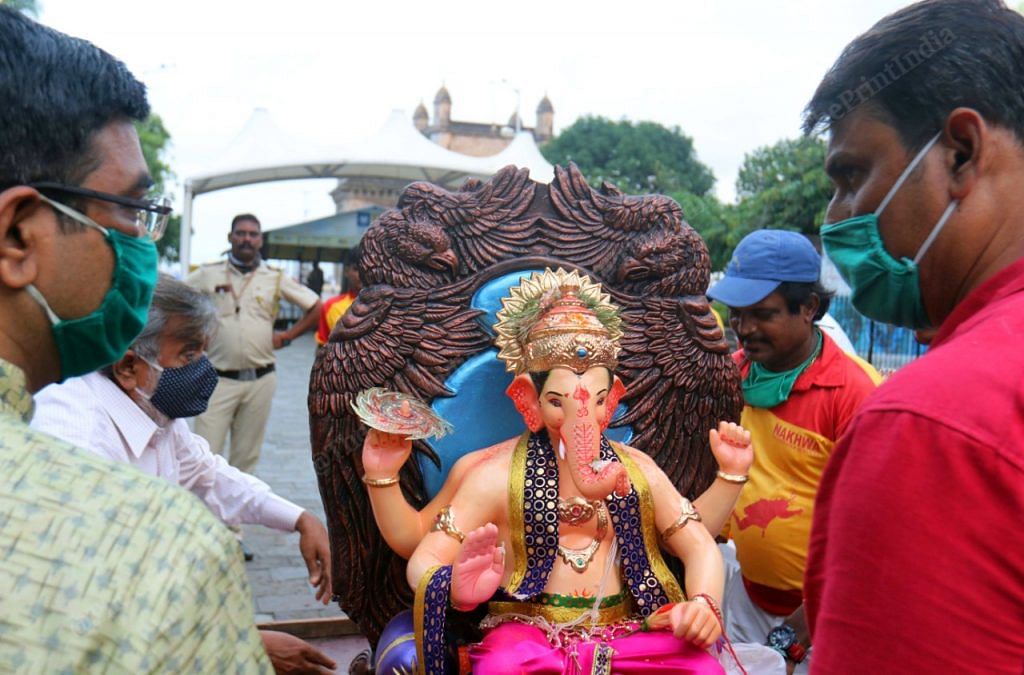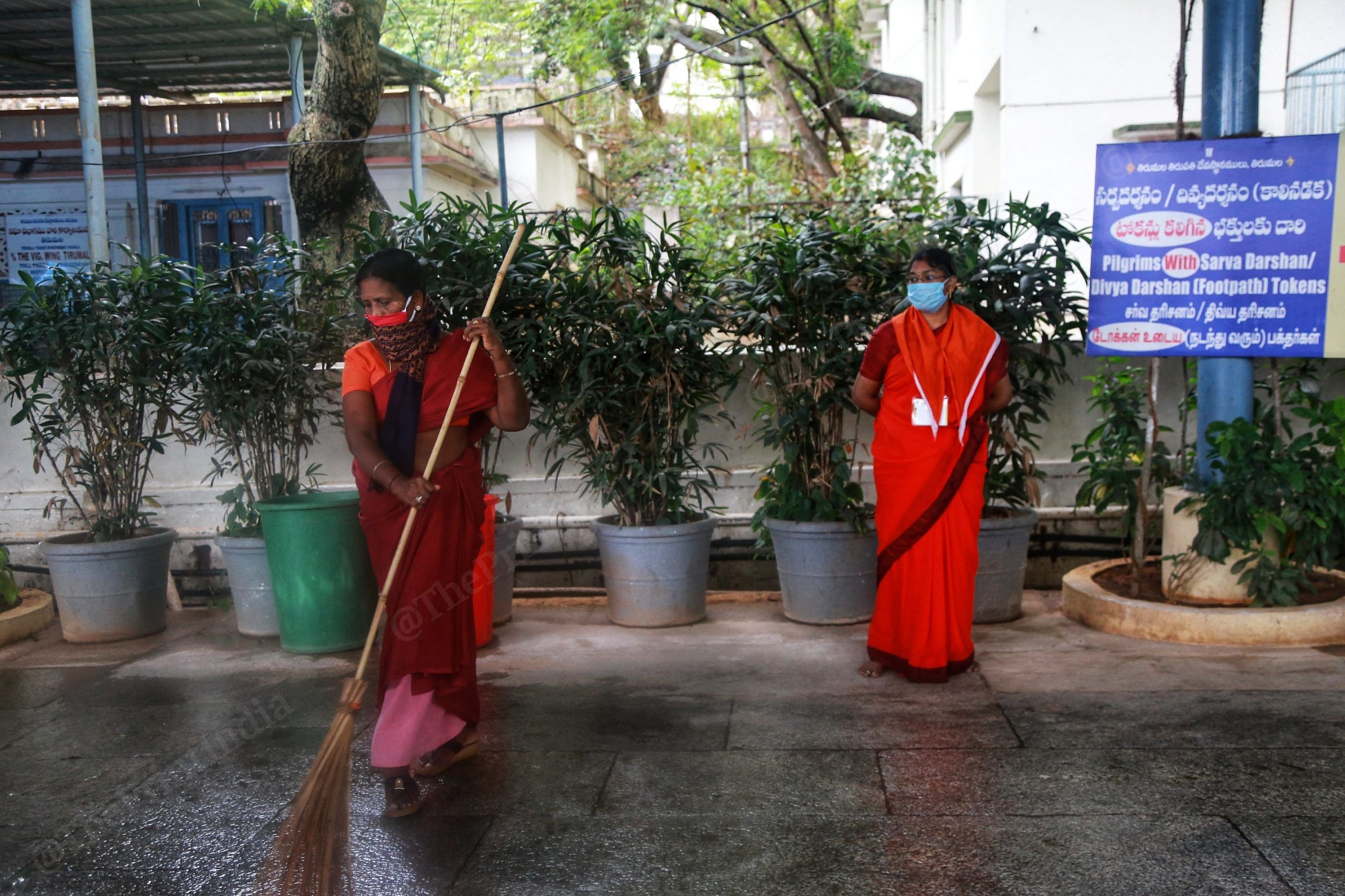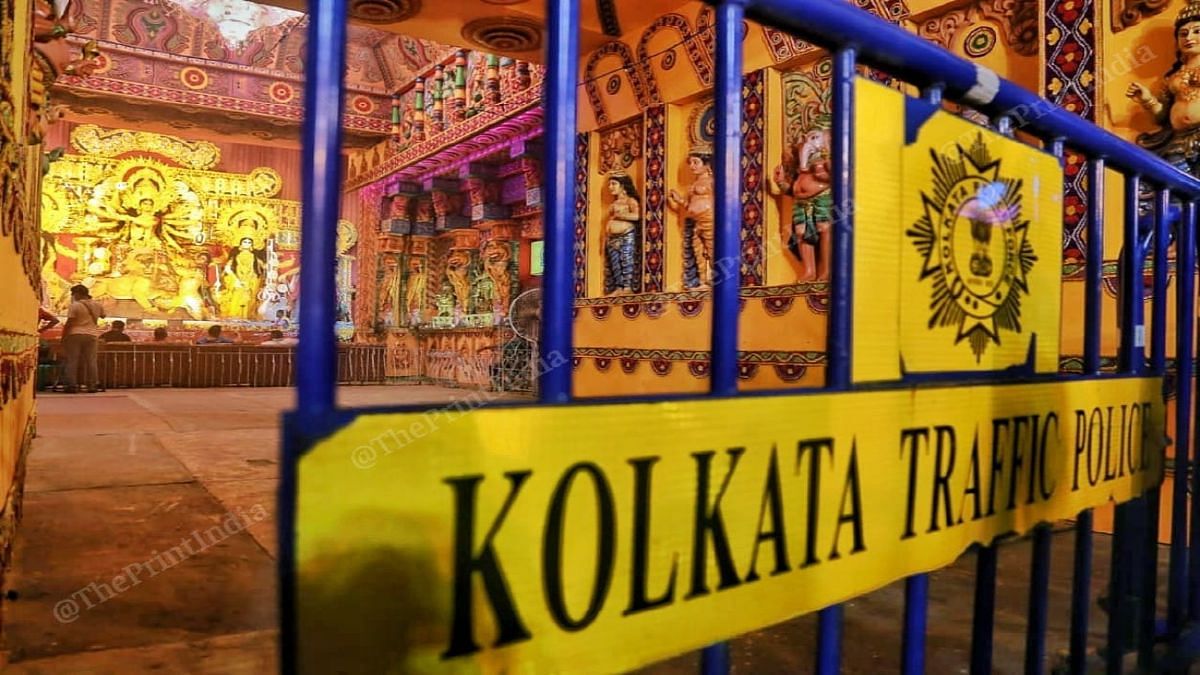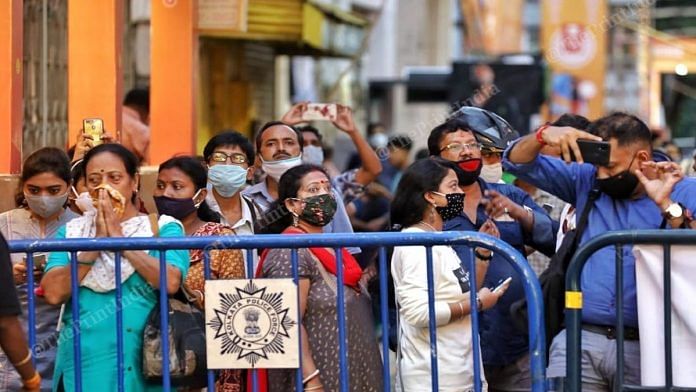Bengaluru/Mumbai/Hyderabad: Health Minister Dr Harsh Vardhan triggered a controversy last week after he singled out Kerala for “gross negligence” during Onam festivities, which led to a massive surge of Covid-19 cases in the state.
While Kerala was seen as a model of Covid management during the initial days of the pandemic, the state added 1,41,924 cases in just over a month — from 22 August to 30 September.
The 10-day Onam festivities began in Kerala on 22 August. The state registered 2,172 new cases and 15 deaths on that day. By 30 September, the daily case count had risen to over 8,000 cases — almost four times more. The rise was blamed on the violation of Covid guidelines during the festival, though the Kerala government had announced strict guidelines and protocols to be followed.
Chief Minister Pinarayi Vijayan, however, refuted Vardhan’s allegations at a press conference Monday and said the recent surge of cases in Kerala was because people didn’t follow Covid protocols during mass congregations and also the protests against the government over the gold smuggling case.
While the Onam festival was blamed for the Covid surge in Kerala, the link between cultural or religious events and a subsequent Covid spike is not limited to a particular religion or state. From Ganesh Chaturthi in Maharashtra to the Tirumala Tirupati temple opening in Andhra Pradesh, some of the worst-affected states witnessed a spike in cases after a festival or opening up of religious places.
In fact, the earliest Covid cluster in India was the Tablighi Jamaat event that was held in Delhi’s Nizamuddin Markaz in March. In the second half of April, the central government had said 30 per cent of India’s Covid-19 cases were linked to the Jamaat congregation.
In May, Punjab saw its Covid-19 cases rise after several pilgrims turned positive after returning from Gurdwara Hazur Sahib in Nanded, Maharashtra.
Also read: Ban on public events can bring down Covid transmission rate by 24%, Lancet study says
After Ganesh festival, cases in Mumbai doubled
In Mumbai, there was a sudden spurt in cases in September after the 10-day Ganesh Chaturthi festival, which concluded on 2 September. The city witnessed about 2,000 cases a day by mid-September — a marked increase from 1,000-1,200 cases that were recorded every day in July and August.
Despite comparatively muted celebrations this year and the government’s regulations, Mumbai’s total caseload jumped by 15 per cent in the first 12 days of September to 1,67,608 cases as testing was also ramped up in this period. The doubling rate, which is the number of days it takes for infections to double, had also dropped to under 60 days from 84 days on 31 August.
Civic authorities attributed the spike to a combined effect of unlocking, meet-and-greet in the city during the festival as well as aggressive testing.
Now that the Navratri festival is under way, the state government has only again issued guidelines for installation and immersion of idols, and has prohibited any Garba or Dandiya events this year.
Of late, there has been a growing clamour among various sections of the society as well as opposition parties to get the state government to open places of worship in Maharashtra.
The government has, however, been cautious in this regard, and has kept religious places shut even as malls, shops, salons, hotels and now restaurants and bars have opened up.

Also read: As Covid cases spike again, Delhi govt tells hospitals to be prepared for dengue, malaria too
Tirumala temple emerging as Covid hotspot
In Andhra Pradesh, religious places opened up in June itself and the famous Tirumala temple in the Chittoor district is proving to be a major challenge for the state in its fight against the Covid pandemic.
According to senior officials of the Tirumala Tirupati Devasthanams (TTD) health department, about 1,400 staff members of the temple, out of a total of 20,000 members, have till now tested positive for the virus. The virus has also claimed lives of at least two priests of the temple.
In fact, back in July, the Andhra Pradesh Police had released a report blaming the reopening of the Tirumala temple as the reason behind the spike in Covid cases in the state and demanded closure of the temple.
But despite this, the board has no plans to shut the temple. And while the temple initially allowed a daily footfall of 5,000 visitors initially, it now lets in 15,000 pilgrims a day. Several politicians, including CM Y.S. Jagan Mohan Reddy, visited the temple in the middle of the pandemic.
Authorities, however, claim that no devotee has tested positive so far and also note that the temple’s team was making 100 calls a day to check on pilgrims’ health conditions once they returned to their cities.

During this ongoing festival season, there are several more precautions in place in Andhra Pradesh.
Navratri celebrations at the Kanaka Durga temple atop Indrakeeladri hill in Vijayawada is usually a grand affair, with about 80,000 devotees visiting the temple every day during Dussehra. But the authorities have now restricted the number of visitors to only 10,000 per day.
Also read: Investing in public health most important lesson of Covid pandemic, says WHO chief scientist
Fears of renewed surge after ongoing festival season
With Dussehra and Durga Puja festivities under way across the country, there is an increased risk of a surge in the number of Covid cases.
In West Bengal, the Calcutta High Court earlier this week ordered that no visitors will be allowed inside the Durga Puja pandals across the country and the mandap will also be treated as a ‘no-entry zone’. Several pandals are also resorting to live-streams.
The order, which came three days ahead of the state’s biggest festival, said only a few organisers will be allowed inside the pandals. In the case of big pandals, 25-30 people — only organisers and priests — will be allowed entry at all times while for the smaller ones, only 15 people will be allowed.

Meanwhile, the 10-day Mysuru Dasara festival has started in the Karnataka city. Tourist spots in the district are usually teeming with visitors during this time of the year, especially during the Dasara celebrations at the Royal Palace of Wodeyars in Mysuru.
To avoid such a crowd this year, the administration had banned tourists in the district till 1 November but Chief Minister B.S. Yediyurappa overturned the order and allowed tourists to visit popular sites during the festival season.
However, the Mysuru district administration led by Deputy Commissioner Rohini Sindhuri has ensured that Covid-19 protocols are strictly followed and those who do not follow rules are immediately being booked under the Epidemic Act.
“There is certainly a fear of spike in cases, as Mysuru has been seeing a steady rise in positive cases. We can only advise people to follow norms and maintain social distance. They should understand it is for their own well being,” a senior district official, who did not wish to be named, told ThePrint.
The central government has also flagged concerns about a possible spike in Covid cases due to the festival season combined with the winter season when respiratory infections tend to occur more.
“The next two-three months are very important. We need to take all precautions, ensure universal use of masks, maintain social distancing, even as the festival season approaches,” NITI Aayog member (health) Dr Vinod Paul said Tuesday at the government’s Covid briefing.
With inputs from Madhuparna Das in Kolkata
Also read: Modi govt has set aside Rs 50,000 crore to give Covid vaccine to entire country







A JOURNALIST who spread fake news of rioters protecting temples is UPSET.
Tabligis were a congregation of maulvis involved in proselytizing activities.
Whereas Both GANPATI BAPPA FESTIVAL AND DURGA POOJA is celebrating of life without trying to proselytize others.
Bizarre attempt to equate what Tabrigi Zammat did with anything else. Tabrigi took the lead off and helped India defeat the war against Corona as an act of sabotage….ThePrint is up to what it has specialized in…